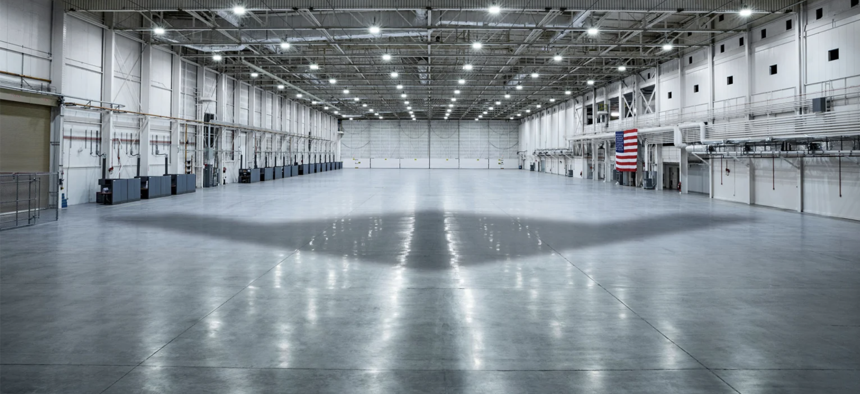B-21’s First Flight Slips to 2023, But That’s Still Ahead of Schedule, Northrop CEO Says
The classified bomber was initially expected to fly last December.
The secret B-21 stealth bomber program remains ahead of schedule even though its first flight will slip from this year to 2023, according to the chief executive of the company that is building the aircraft.
“There's a bit of a misconception and it's understandable, but it needs reconciling,” Northrop Grumman CEO Kathy Warden said Thursday at a Bernstein investors conference in New York. “We are still ahead of the acquisition program baseline date for first flight on the B-21.”
Warden said that plans to fly the highly classified plane this year “were early projections” and “were never official dates.” Air Force leaders originally estimated the first flight in December 2021, then mid-2022. Last month, Aviation Week reported that the date had slipped again, to 2023.
On Thursday, Warden said that “we are still within the timeline that they projected for the program.”
An Air Force official said the company is still within its window for conducting the first flight and that it’s not considered late.
Neither Air Force officials nor Warden offered an explanation for the schedule change. Since the B-21 program is classified, it’s difficult to get an independent assessment or analysis of its true progress.
There are six B-21 aircraft in various stages of assembly at a Northrop Grumman factory in Palmdale, California. The Pentagon’s most recent budget request shows the Air Force plans to spend $19.1 billion on B-21 aircraft between fiscal 2023 and 2027. The Air Force did not disclose how many aircraft that money will buy.
Warden said Northrop expects “to be able to meet those cost targets and profitably deliver the aircraft.” The company and the Air Force have approached development of the B-21 differently than earlier generation military aircraft, she said.
“We have worked through a development cycle and now into a test cycle that really is less about meeting a first flight date, and meeting a level of maturity for the aircraft, meaning we have wrung out the software before it will ever fly,” Warden said. “We have wrung out many elements of the design before the aircraft gets airborne so that we're less likely to find those things.”
The company considers the first B-21 a “production-representative aircraft,” Warden said. In the past, companies have built prototypes and test aircraft that could not be deployed without major improvements and updates.
“Many aircraft before had worked toward just getting a development aircraft in the air and then figuring out how to make it more producible and meet certain criteria like weight or even range as they went from development into production,” she said. “We have done that work as we have worked through the development phase of the program and so it gives us a much higher confidence and more mature aircraft as we prepare for first flight.”





